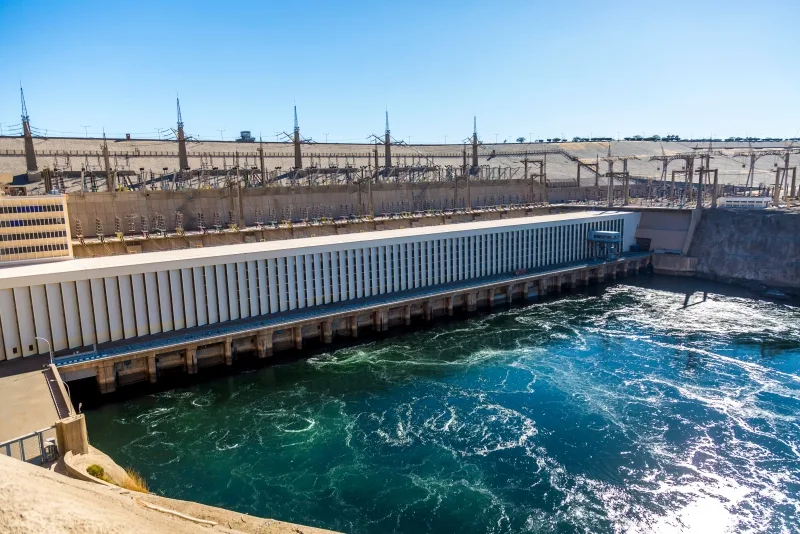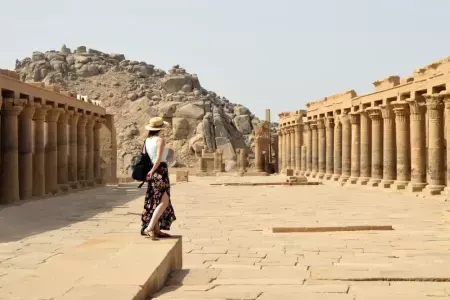The Unfinished Obelisk of Aswan is a monument in Egypt. It is surely an intriguing but lesser-known landmark, lending an aura of the ancient world. It is placed right in the middle of the granite quarry of Aswan. Even in its incomplete state, it is massive and can therefore show us how intelligent and engineering-oriented the ancient builders of Egypt were. Whether you're a history enthusiast or simply seeking to explore Egypt’s rich heritage, this site is a must-see on your Egypt tour. The trip to the Unfinished Obelisk is more than just a journey into the manufacturing process of the ancient Egyptians. It is a step into one of the most ambitious yet incomplete projects of the pharaohs.
History and Importance of the Unfinished Obelisk
The Unfinished Obelisk has been one of the great standing exemplars of the history of ancient Egyptian architecture and engineering in the Aswan area of Egypt. This gigantic, unfinished structure provides an excellent interpretation of both the art of stone-carving and monolithic construction around the 18th Dynasty era and under Queen Hatshepsut.
Birth and Purpose
It was meant to be the largest of all the obelisks. Constructed by Queen Hatshepsut (1479–1458 BCE), who bestrides Egypt as an iconic female monarch. One of the queens who had dwarfed male pharaohs in her being, she needed to establish monumental constructions that would leave an indelible imprint. Elevation: Place the obelisk at the Temple of Amun-Ra in Karnak, Thebes.
Obelisks were meant to honor deities and either commemorate important incidents or reigns of pharaohs. The monument to Ra, or the sun god, obelisks were said to stand as pillars of light held up on earth and heaven, adorning entrances to temples. So, the Unfinished Obelisk was meant as a grand metaphor, a show of Queen Hatshepsut's might and devotion.
The Construction Process
In the granite quarries of Aswan, the obelisk was hewn. They were a primary source of stones for many of the monumental constructions of old Egyptian culture. The stone was slowly freed by carving away the granite and using copper tools. These were the only sort of tools available during that time. Furthermore, these workers would probably have used water-soaked wooden wedges to pry into and split apart stone, thereby making that unpleasant work easier.
The obelisk eventually grew to 41 meters (135 feet) in length before the project was laid aside and weighed approximately 1200 tons if completed. Its great size would have surpassed the much lighter setups that survived.
Why Was It Left Unfinished?
Primarily, a crack develops in the granite as the obelisk is carved, and this may be why the project was discarded: it was likely seen as a flaw that would have made the stone unstable and hazardous to move or erect.
There could also be the fact that the change that took place in politics and society after the successor of Hatshepsut, Thutmose III, influenced these monumental projects. Thutmose III was gradually consolidating his power and reversing many of Hatshepsut's policies, and as supplies and priorities shifted rather quickly, it is likely that the obelisk's construction may have been delayed.
Significance of the Unfinished Obelisk
The continued presence of the Unfinished Obelisk qualifies it as one of the greatest landmarks in archeological and historical exposure to ancient Egyptian craftwork. It is one of a kind, the largest, and the only obelisk of its class still within the quarry, leaving an important history of precisely how they carved, transported, and put up such immensely heavy structures.
Why the Unfinished Obelisk is a Must-See Landmark in Aswan
1. A Peek into Ancient Engineering and Craftsmanship
The Unfinished Obelisk is the result of the outstanding skills of the ancient Egyptian engineer and stone mason. To this day, one can see in Aswan how large sections of stone were cut out of solid granite bedrock with copper tools, chisels, and wooden wedges. What better way to understand the complexity and level of work involved in such monumental tasks than to see one at its very beginning point and think of how it would have grown to completion? This is a great learning opportunity that puts everything in proper context-the grand constructions of Egypt such as the pyramids and all other obelisks throughout the country.
2. An Unfinished Masterpiece: The Backstory
What makes the Unfinished Obelisk marvelously entertaining is the fact that it remains uncompleted. The cracked piece of granite served to halt the project thereafter. The unfinished work forms a bridge to the imperfections of the ancient world, evidently proving that the greatest ideas could be affected by an even minimal contingency. The story of the making and decline gives insight into the ambition of the ancient Egyptians and the differences they encountered while building the great structures.
3. A rarely-seen Seen site
While the majority of obelisks were transported to their sites to be raised as key monuments, the Unfinished Obelisk still inhabits its own quarry in the area of Aswan. This makes it a rare and invaluable archaeological site. Standing next to this giant piece of unfinished obelisk, one can only imagine how the structure looked and get a sense of the work that went into enormous projects. This epitomizes a connection to the past that gives visitors a true view of strategies from the extraction and carving of stone used in building Egypt's most iconic landmarks.
4. Connection to Queen Hatshepsut's Legacy
The Unfinished Obelisk was made and planned by Queen Hatshepsut, one of Egypt's most powerful pharaohs. Being one of the most powerful women that ever walked the earth, Hatshepsut actually embarked on a host of building projects—big and small—built to remind subsequent generations of her tenure. If you visit the Unfinished Obelisk, it really drives home the reign of Queen Hatshepsut. Though it remained incomplete, it still painted a pictorial ambition of the grand projects Hatshepsut envisioned, projects that not only included the Sun Temple of Hatshepsut at Deir el-Bahari.
5. Stunning Views of a myriad of Desert and Garden scenes
Tourists can get a glimpse of the Aswan granite quarry from where the Unfinished Obelisk is born, not to mention the stunning panoramic views offered by the surrounding landscapes. While exploring the historical gem itself, anyone who comes to Aswan will be spoiled for choice with beautiful desert scenes, etc. The place is very peaceful and conducive for those who would like to think about history in relation to its works and the natural beauty of Aswan.
6. There Is More to Know: Size and Scale of the Ancient Monuments
When gazing at that huge stone, it makes one wonder at the great size of the Unfinished Obelisk. Should it have ever been finished, it might have been one of the tallest obelisks in Egypt and thus tower above anything in the distance. Such a fact provides an interesting insight into the grand ideas the ancient Egyptians had regarding their architecture and the logistical problems involved in the erection of such monoliths.
7. An Unforgettable Educational Experience
The Unfinished Obelisk is another one-of-a-kind educational experience for history buffs, archaeologists, as well as those interested in ancient civilizations. You could say the Unfinished Obelisk looks at a stage of Egypt's past without any embellishments, without any polish over time, or restoration with modern materials. It speaks volumes into issues concerning the ancient Egyptians' understanding of materials, as well as technologies and culture.
8. Unique POV on Egyptian History
The Unfinished Obelisk suggests some of Egypt's greatest projects went unfinished or did not proceed according to expectations. This view of chance occurrence in Egyptian history becomes insightful as it demonstrates that perfection of everything was not always the case. Nonetheless, although unfinished, this monument has lasted for millennia and continues to enchant and inspire visitors from all around the globe.
The Unfinished Obelisk in Aswan is a sweeping evocation of the vigor and ambition of Egyptian antiquity. Its enormity and inactivity lend it its unusually prized value in its depiction of the characteristics shared by the ancient builders, as well as the determination to sue the extreme amount of effort at their disposal before completing the construction of such immense structures. You should visit this spot if you like Egypt's compelling historical content, which could be while you are contemplating the quarry, considering the legacies of Queen Hatshepsut, or marveling at the technicalities of engineering meant to sustain it, etc. Really recommend paying a visit to this site during your Aswan day tour, as it stays long on the mind as a rare experience to further reinforce the admiration for the builders' civilization, which formed the grandeur and cultural heritage of Egypt.














